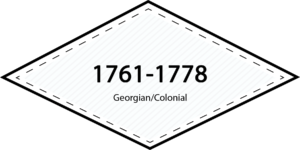“Years of Abundance”
European aristocracy & American wealth led fashion
—— THE ERA IN BRIEF ——
While England danced the minuet with perfect steps, a strong economic & cultural America prepared to take leave of English ways. Women still wore “traditional” clothing & roles, but began to influence policy & decisions from behind the scenes. America had become a “melting pot” of those who had settled already & those who were coming to find a new way of living – away from Court & dictates under a new flag, & a new spirit of Independence.

—— PORTRAITS FROM THE ERA ——
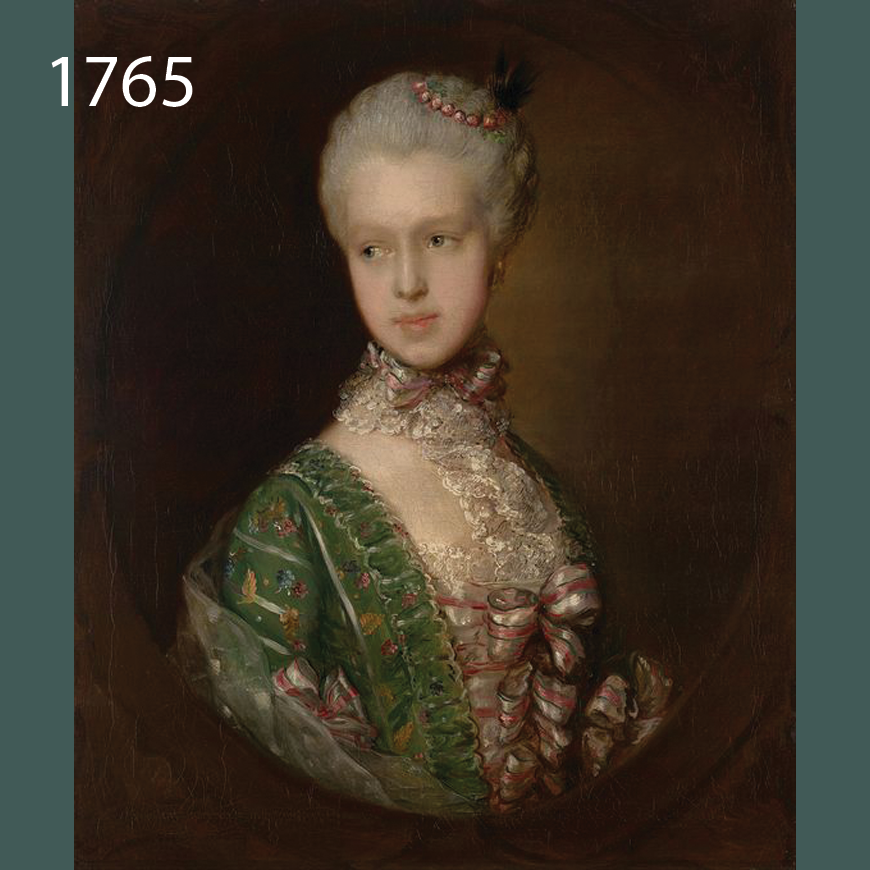
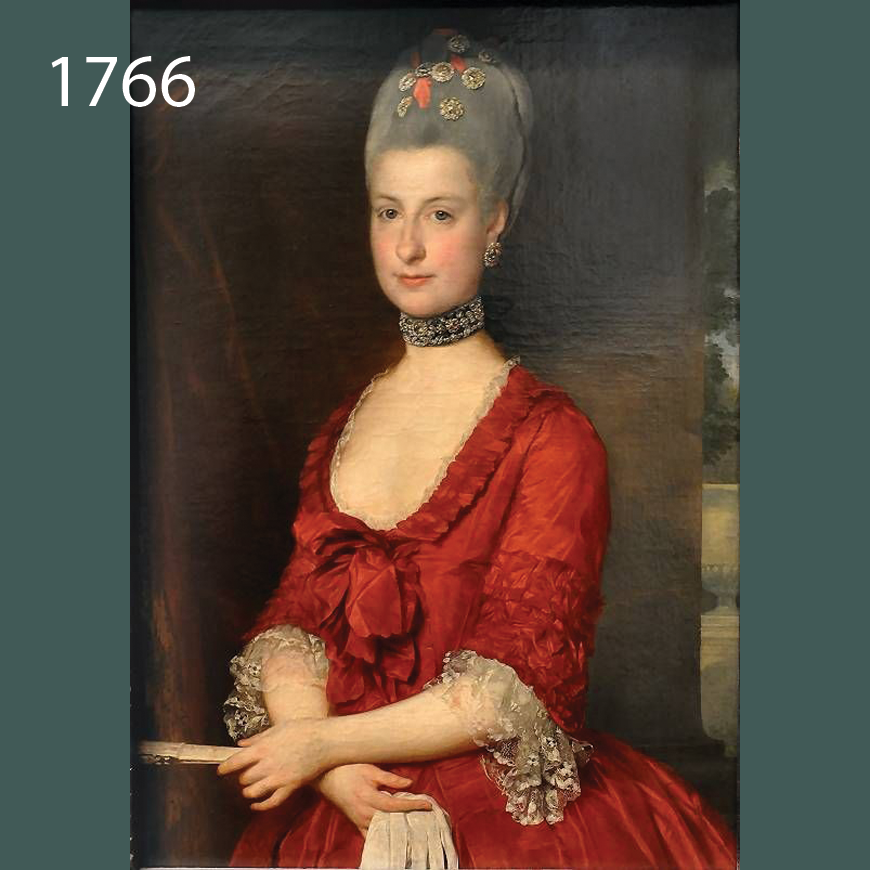
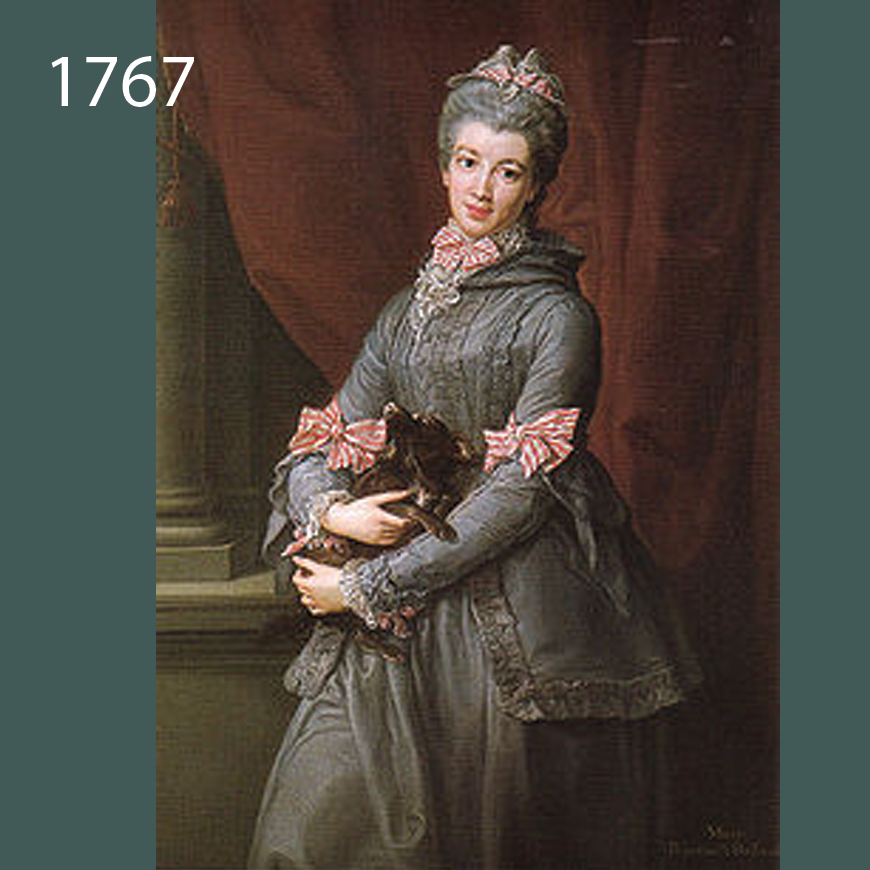
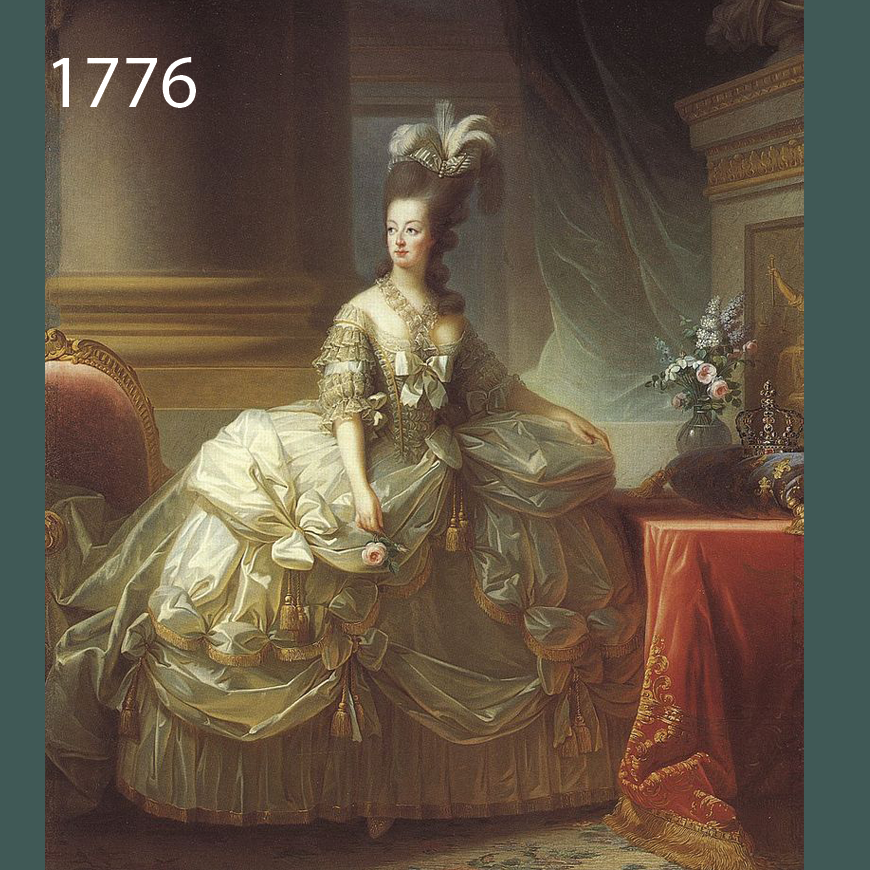
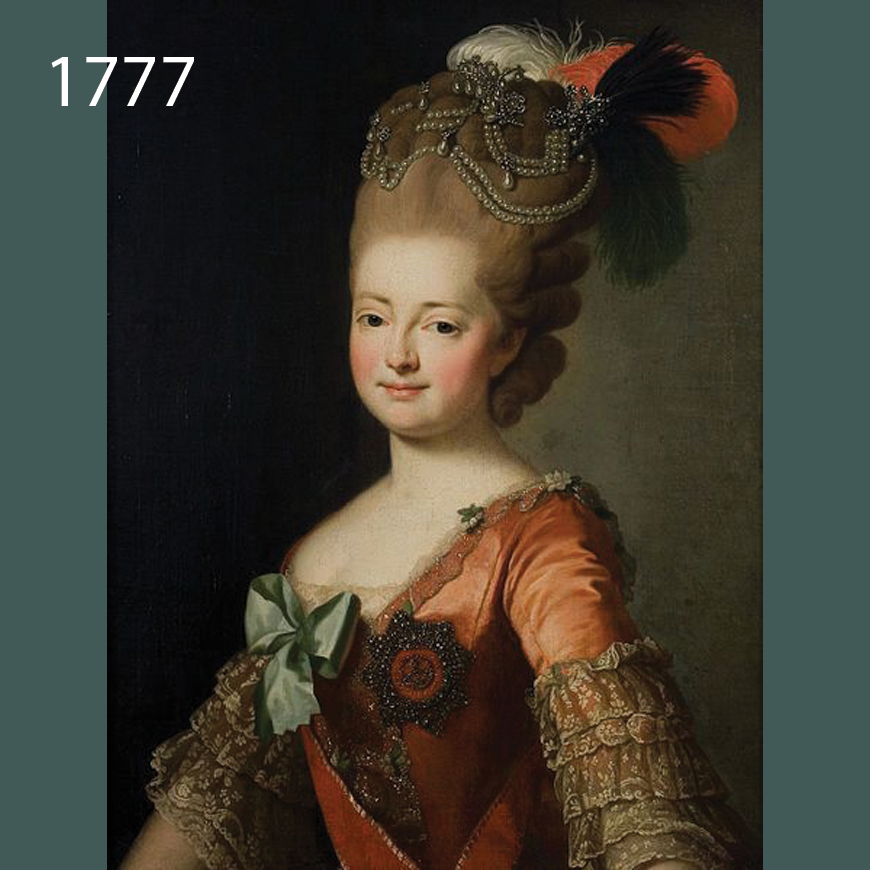
 —— WORLD SITUATION ——
—— WORLD SITUATION ——
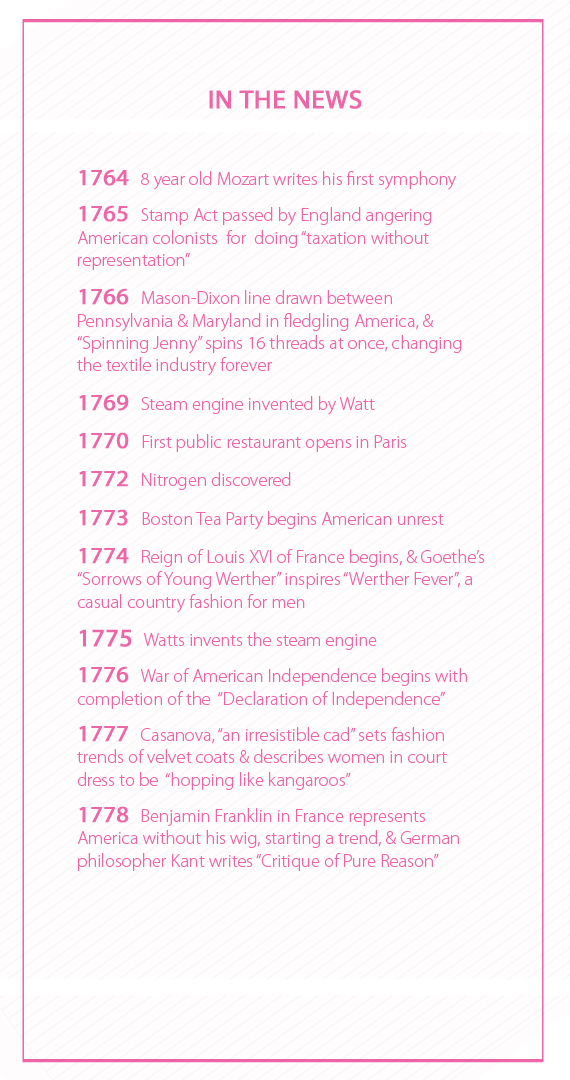
- Years of “abundance” in Europe & America
- Rising conflict under the government of England led to America’s desire to break away
- America was beginning to be cut off, & to separate itself from Europe at the rise of the Revolutionary War
- America had the highest per capita income in the world in 1776 – a huge middle class. Americans wanted to keep it that way, which was a key reason for the Revolutionary War
- Revolutionary War in America 1776-1783
- Status of women in America was improving faster than anywhere else in world
- The French court under Louis XIV ordered his wife Marie Antionette & French women to buy French fabrics, laces, notions to pump up the economy. Other countries followed with restrictions & regulations to keep their own people buying their own goods instead of importing
- England continued to dominate world trade of wool & cotton
- Steam power changed the world
- France was headed to Revolution too, & had prequels as early as 1783 that affected trade & commerce
- “Grand Tours” in 1775 and balls in Europe were at the height for European aristocracy
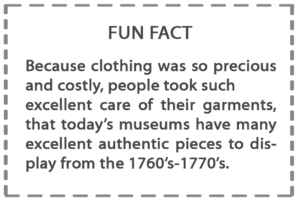
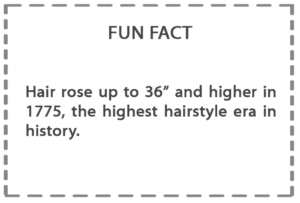
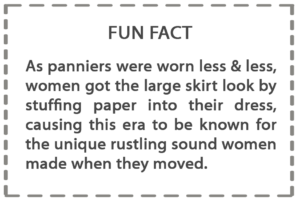
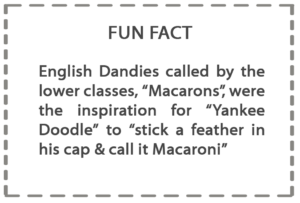
—— FACTS OF THE TIME ——
- England continued to lead the world in production of fabrics with the invention in 1764 of the “Spinning Jenny”, which improved again in 1768
- English innovations changed industrialization to a cottage industry along when the “Spinning Mule” was invented in 1779
- As weaving systems for wool & linen were being developed into the next era of 1787, England took the world lead in fabric production yet again
- Because clothing was so precious & expensive, people took excellent care through generations to preserve it. As a result, there exist today excellent museum clothing articles from this era forward
- By the end of this era, fabrics were becoming cheap & available to everyone in Europe & North America (Asian trade was still closed off politically & due to restrictions in transportation at this time)
- America started to influence fashion. News of the American West with its beavers, furs, & backwoodsmen affected European fashion
- Americans of necessity used light fabrics manufactured at home or in Europe, because they couldn’t get the heavily ornamented foreign goods
- Americans used what they could; broadcloth became a staple wear in the new America
- The “simplify” philosophers in Europe embraced the informal American styles & used soft chintz & light silk fabrics for more functional, comfortable, & yet fashionable garments

—— FASHION TRENDS ——
- “Abundance” meant elaboration & intricacy in clothing, although the era is called “traditional”, because women’s fashion still based on the “sack” or “mantua” with variations
- French & English were very different at first. The English had more outdoor activities & leisure, while French tended to focus on indoor pursuits & court life. Their clothes reflected their lifestyles
- The French then turned towards more simple looking & pastoral (rural) type clothing similar to the English with influence
- In the beginning of this era, fashion followed the French Court dictates of Louis XVI’s Queen Marie Antoinette
- Under Court influence, hair achieved crazy heights & was floured & pasted with whole vases of flowers added as well as false hair
- 1775 had the highest hair ever in history before or after except the Marveilleuse & fashion extremists. It went up to 36″ high with elaborate hats, with tiny thimble mobcaps on top
- Marie Antoinette’s Court apparel influenced formal fashion so that hoops became huge, breasts were pushed up, necklines went down, & there was never too much tassle fringe, ruffle, lace, plume, or artificial flower
- By the end of the era hair was worn to favor naturalness & simplicity, a look that was spearheaded by Benjamin Franklin who forgot to wear his wig to the French court
- Marie Antoinette actually despised being “trussed up” in Court apparel.
- As the hard boned structured panniers were worn less and less at the end of the era, women got the large look by stuffing paper in their dress. This era is known for the unique paper rustling sound women made when they moved
- Re-use & seasonal change of garments was vital as clothing was precious & costly even to the wealthy. A man’s suit cost the same as a piece of furniture at this time
- Clothing was carried over for years, and altered, refurbished, added to, re-trimmed, & handed down more than it was created
- Because clothing was costly & difficult to obtain, cast-offs & hand-me-downs from higher class employers to lower class employees were common “job perks”
- Because servants were wearing their high class employer’s cast off clothing, it ended up that everyone wore somewhat the same thing (servants would make distinction in uniform in the 1800’s, using the aprons, but not yet)
- Second hand meant 5th or 6th hand really, & there built a huge industry with peddlers, shops, & whole shopping districts (booming by 1874)
- In the 1770’s, there were hand drawn fashion plates to communicate a pattern or design. Tailoring & dressmaking was now done based on a 2-dimensional image (“flat pattern”) as well as by draped design

—— FASHION SPECIFICS ——

ALL IN ONE GOWNS & STRUCTURES
- The main garment started the era as a mantua, which was a limp garment
- As the era progressed, the mantua was stiffened, decorated, & structured
- The method of bodice/skirt design changed slightly by geographic location, although all the new styles were worn in all the regions
- Two dominant variations on the mantua or “sacque” (back pleats, train, & mock stomacher) appeared at first; followed in 1770 by a third type:
- 1) Robe a la francaise – a gown fitted in front which fell in straight pleats from back down;
- 2) Robe a l’anglaise – a gown fitted at the waist all the way around
- 3) Robe a la polonnaise – open robed gown fitted at front at waist or below waist & fitted all around; pulled up through cords & loops to drape in 3-section “poufs” over an outer petticoat
- The Polonnaise & skirt were at ankle length early in era; by 1788 getting longer
- Skirts had matching box pleats to give “Bo Peep” shepherdess look
- The underskirt petticoat was ornamented too & could be seen
- The robe (gown/dress) expanded vertically as well as horizontally in its silhouette as compared to the previous era
- Necklines were wide & low, & trimmed with fine lace
- A fichu “dickey” on the neck covered the open bosom
- Sleeves got fuller in 1775 by adding pleats; then went narrower again by 1790
- Stomachers were still use; pinned to the tabs of the stays under the robings, or by cross laces over the stays, & then covered by neckerchief or large sash
- Robes were worn open (or sometimes closed) with the bodice joined to skirt
- 1778 saw the addition of frills such as box pleats on the bodice, sleeves, & along the front of the open robe
- New understructures were developed in skirts. One to two hoops made of bone with tape were typical through most of the era
- 3 hoops were typical of the Polonnaise as this era closed, but would be abandoned shortly after in favor of “bum rolls” & “false rumps”
STAYS
- Whale mouth cartilege (“bones”) was used in bodices as stiffener
- Stays (predecessor to the “corset” of the next century) were covered with beautiful fabrics & trims. They were worn under clothes & were not showing
- Stays were strapless & cut high at the armpit to force good posture
- Back lacing of stays was typical early in the era, but later it was optional front and/or back
- The objective of wearing stays was to make the torso conical & the hips appear to be wide
- Stays were tight but comfortable so women could work in them, since society was still largely agricultural; upper class add additional stiffing in the garments in addition to the soft stays
UNDERGARMENTS
- Multiple petticoats were worn for status and/or warmth, or to achieve width
- Panniers, the large side “bumps” were worn to fancy occasions or court; not for everyday use
- Mobcaps worn even at fancy occasions

ACCESSORIES
- Graceful folding fans in bone or ivory handles with scenes painted on silk or parchment were common with upper class & nobility
- Satin or taffeta bonnets were worn for any non-special occasion
- Everyone, both men & women, carried a walking stick
- Jewelry was worn everywhere on the body including pearl necklaces, bracelets, pendants, miniatures, & buckles
FABRICS & NOTIONS
- Light colors were most commonly used
- The two skirts would be of contrasting colors, or lighter or darker tints of the same hue
- Until 1790 elaborate brocade, satin, stripes, printed cottons, taffeta, embroidered wool, & plaids were common
- After 1790 cotton was dominant. It was available in gorgeous florals & prints that came through England from the West Indies
- Unique Indian dye techniques introduced batik among other resistant dye processes
- Indian silk was available with beautiful dyes as well. These early silks were stiff
Stripes were typically very wide, with florals. As the era ended, stripes became narrower & the floral patterns smaller & more intricate
 —— EXTANT (ACTUAL) GARMENTS ——
—— EXTANT (ACTUAL) GARMENTS ——
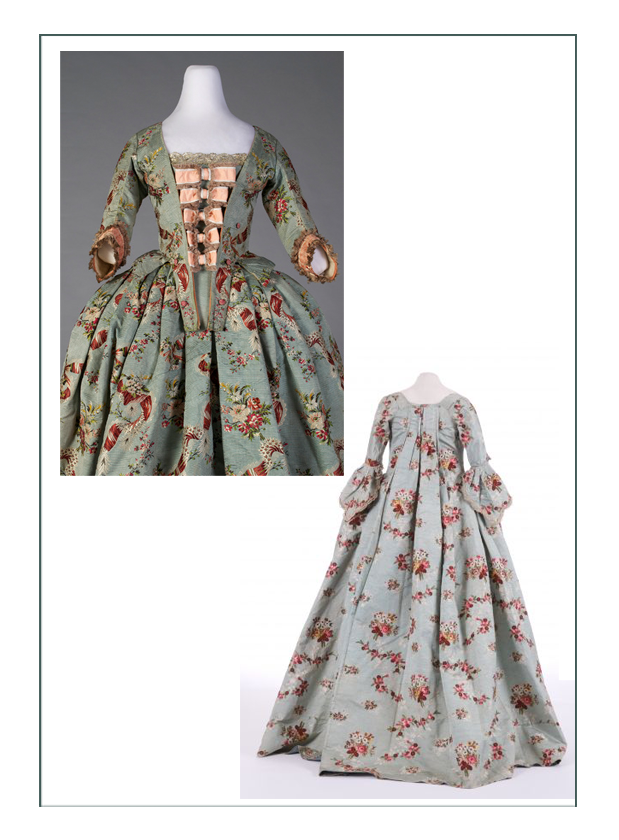
—— (above) “Robe a l’anglaise 1769” ——
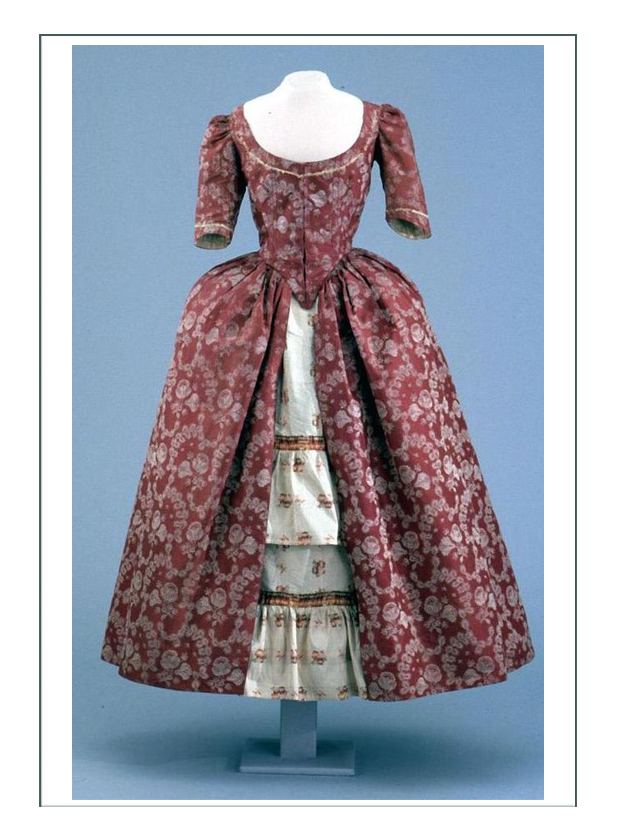
—— (above) “Robe a l’anglaise 1770” ——
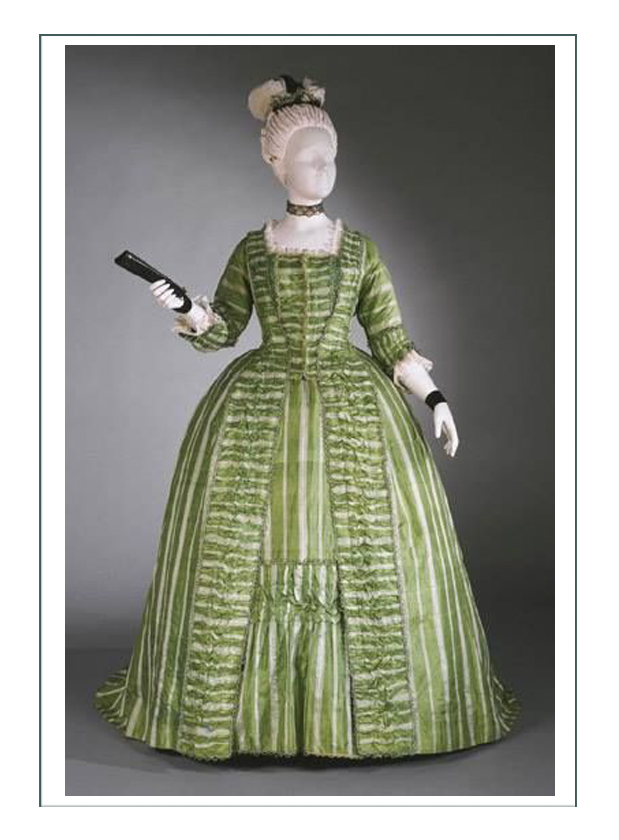
—— (above) “Robe a l’anglaise 1775” ——
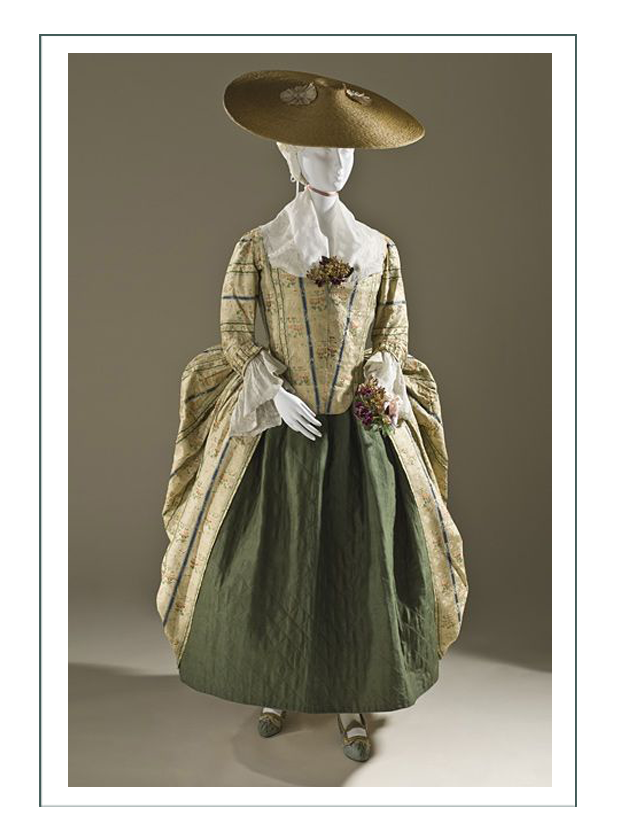
—— (above) “Robe a la polonnaise 1775” ——
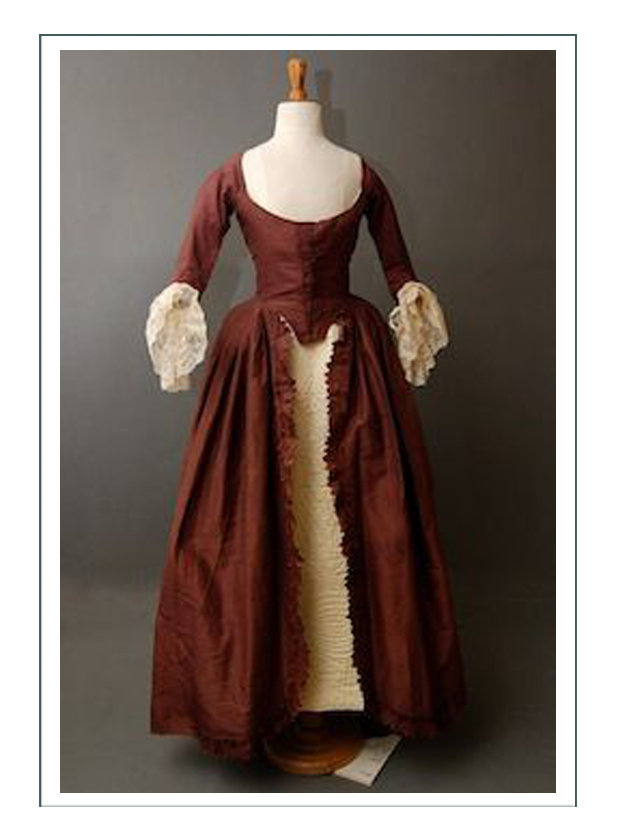
—— (above) “Levite Robe 1776” ——
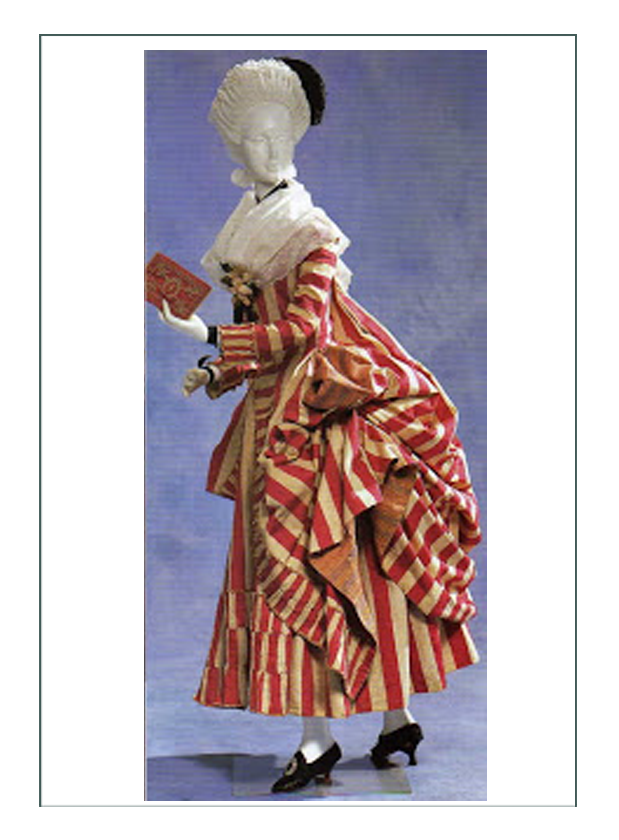
—— (above) “Robe a la retroussee dans la poches (Skirt tucked in pockets) 1777″—–
SEE ALSO THE 1740-1780 Special COLONIAL SECTION plus the Powder Springs Elementary Research Pages for more about the history of the day
Click here to go to Yvonne’s Design Development (next)
Click here to go to Yvonne’s Main Page with the Finished Project

